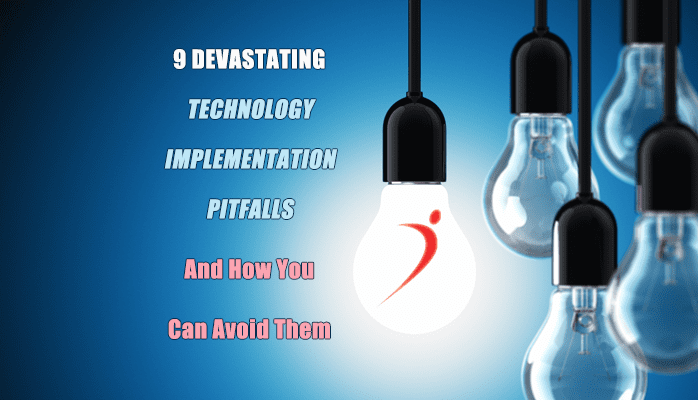
Thomas Edison famously believed that failure was simply a temporary stop on the pathway to success. That might be true when you’re inventing the light bulb, but when you’re planning to upgrade your talent acquisition software, a technology implementation failure could have devastating effects on budgets, revenue, productivity, and work hours.
A recent Gartner study found that up to 75% of all enterprise resource planning (ERP) implementations fail to meet their objectives. That’s astonishing—and it should make every project manager sit up and pay attention. What’s going on with IT implementation and why aren’t businesses getting the results they expect?
While every recruiting software implementation brings a unique blend of factors into play, here are 9 of the most common reasons for project failure:
Ambiguous Methodology
Waterfall by any other name is still waterfall. In other words, agile isn’t just waterfall with different terms. If you want to use agile methodology, make sure you understand what it entails, plan for cultural adjustments (especially if this is a new approach for your company), and solicit buy-in from participants.
Insufficient Planning
Poor planning leads to confusion, budget excesses, and problems with project scope. Agile methodology doesn’t negate the need for careful technology evaluation, requirements elicitation, timeline development, budgeting, testing strategy, contingency planning, and negotiation among participants and stakeholders.
Lack of Clear Leadership
With no designated leader, the project will flounder. Every project needs a champion—a primary decision-maker who is responsible for keeping all stakeholders on the same page, facilitating involvement at key stages of the project, encouraging leadership buy-in, and demonstrating the need for change.
Insufficient Requirements Elicitation
Haphazard or incomplete requirements gathering will result in poor adoption rates and usability issues. Consider business, talent acquisition, and IT needs and follow a systematic methodology for drawing out requirements that may not be initially apparent.
Communication Breakdowns
Communication problems among stakeholders, project management, talent acquisition, and IT personnel result in different priorities and processes. Keep everyone on track with a formal communication process, metrics, and frequent updates.
Scope Creep
Scope creep often happens because you haven’t done due diligence on one or more of the items listed above. If your project is becoming more and more complicated as you go and you’re worried about your budget and timeline, be sure to thoroughly evaluate each change request and keep your initial vision in mind.
Haphazard Testing Strategy
Insufficient testing will guarantee problems at go-live. In addition to iterative testing, conduct active load user testing to identify any unanticipated effects or bugs and avoid downtime.
Undeveloped or Nonexistent Contingency Plan
If something can go wrong, it probably will. Develop contingency plans to mitigate problems and prepare for worst-case scenarios.
Quality Assurance Issues
When the final outcome doesn’t match the initial vision, go back and assess your processes and strategy for errors or quality problems. Quality assurance manages deliverables using audits, benchmarking, cost-benefit analyses, control charts and other measures to ensure that the project meets original core requirements and expectations.
Businesses can’t afford to be as cavalier about project failure as Thomas Edison was about his 10,000 ways not to invent a light bulb, but they can learn from the challenge he issued to his staff: “There is a better way to do it. Find it.”
If you want your next talent acquisition software implementation to be a success story, take a close look at your current processes, communication strategies, and leadership methodologies to identify snags and prevent problems before they derail your project.

